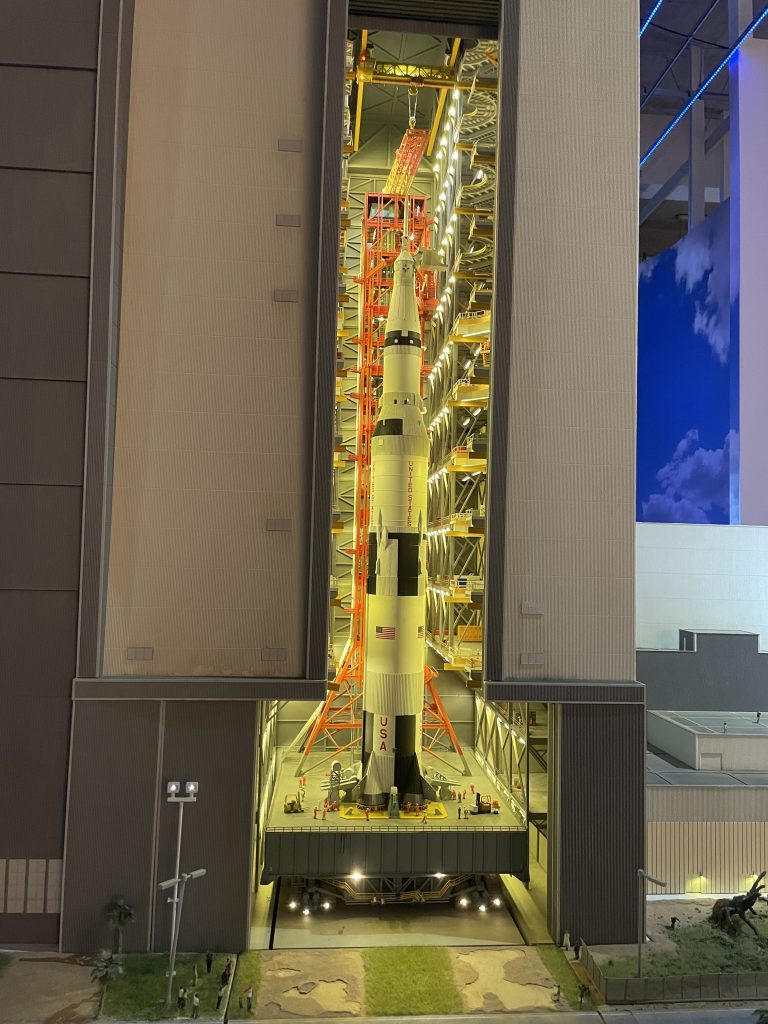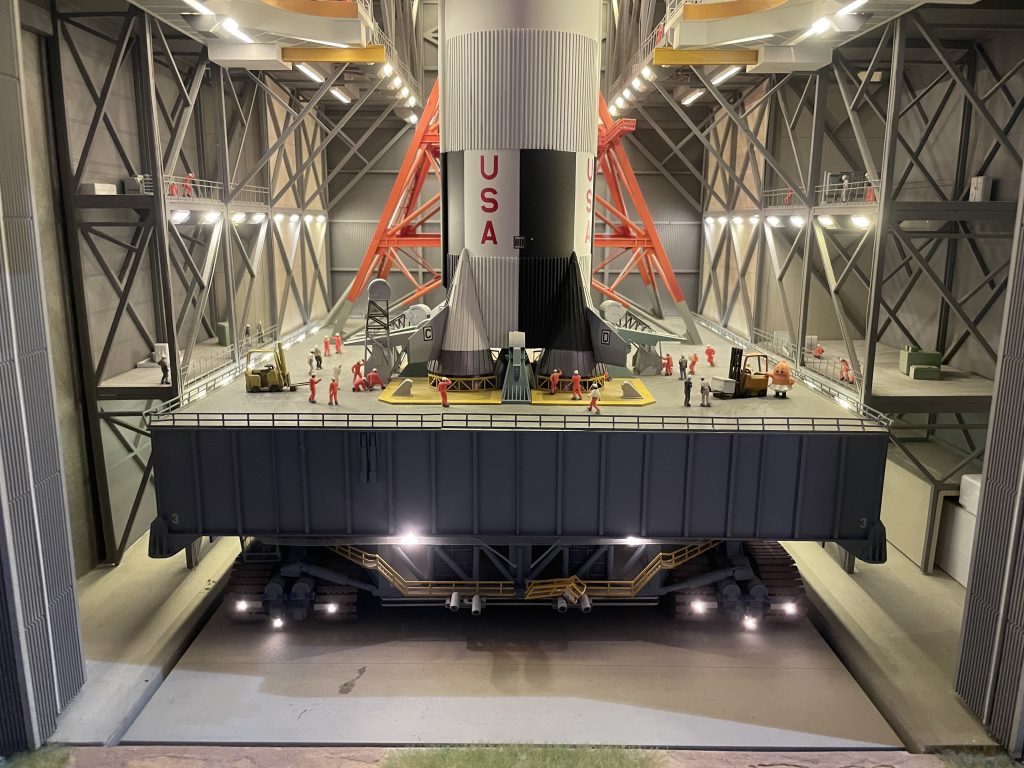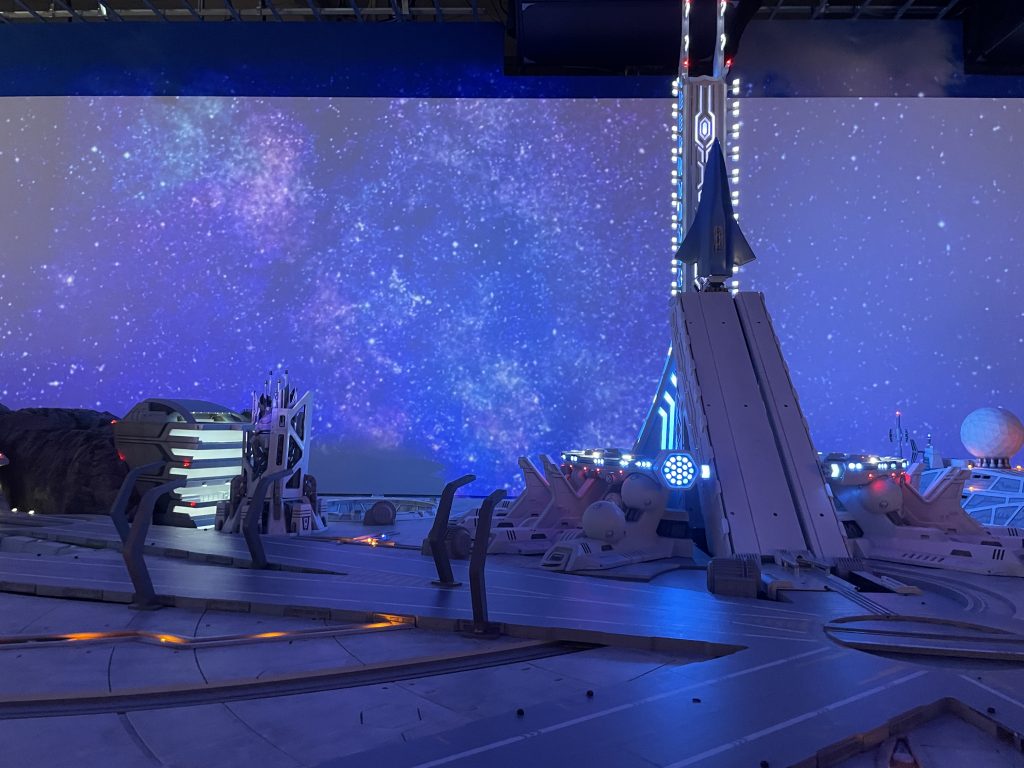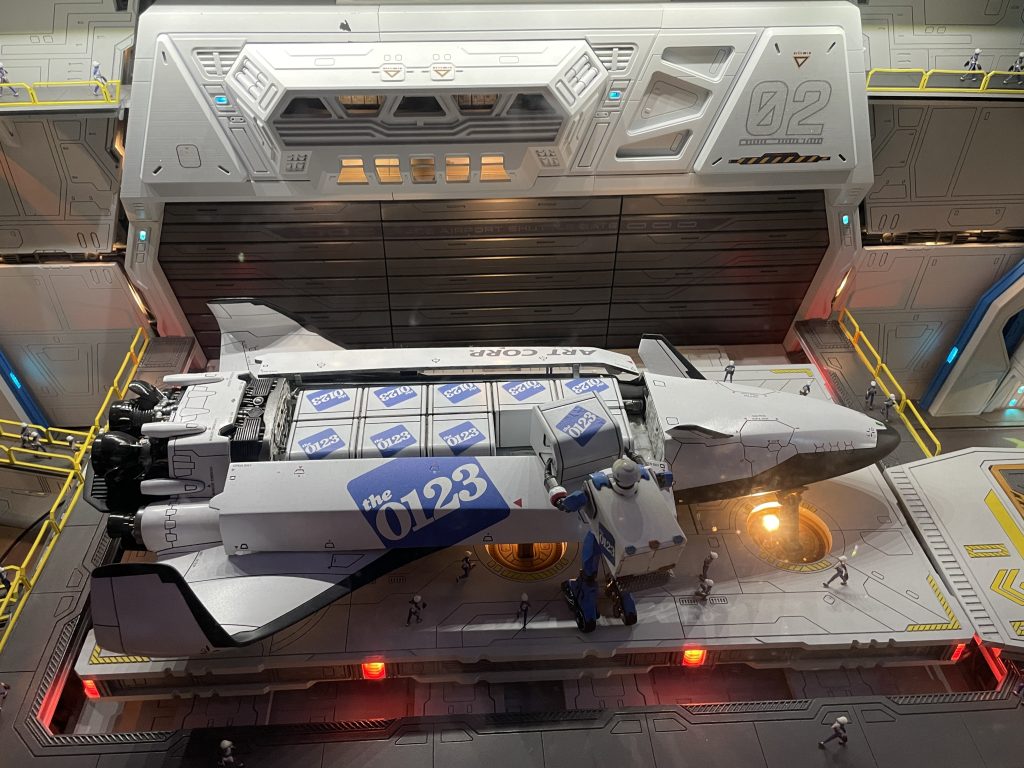
I entered the Small World Museum and went up to the 3rd floor to view the exhibition. The first exhibition theme I encountered was SPACE CENTER.


You can see the Saturn V and Space Shuttle models on display in the glass case. If you look at them from all sides, you can see that they are made in great detail based on the actual models.

You can visit the service desk to purchase a participation kit or if you have any questions.

The SPACE CENTER is a place where the Apollo program era of the 1960s and the future space center are placed side by side.
In particular, it faithfully reflects the atmosphere and components of the actual Kennedy Space Center at that time. And there are launch events of the Saturn V Rocket and the Space Shuttle.

The Kennedy Space Center (KSC), NASA’s main space launch site located in eastern Florida, USA, is depicted to represent the Apollo program era in the 1960s. It is one of the most symbolic and important places in the history of human space exploration and has been the starting point for many space missions.

Here you can see the Vehicle Assembly Building (VAB), a massive space where rockets and spacecraft are assembled. At the time of its completion in 1965, the VAB was one of the largest buildings in the world.

There is ample parking in front of the building for NASA employees and technicians

These are NASA employees and engineers. They are wearing white hard hats and moving somewhere.

During the Apollo program in the 1960s and 1970s, people would drive their camper vans to the shore where the launch pad was visible, set up tents and chairs, and wait overnight to watch the Saturn V rocket launch. It shows the romantic atmosphere of American society and the public’s expectations for space development.

To the right of the assembly building is the control tower that manages the launch.

The parking lot in front of the building is also fun to look at the antique American cars that bring back memories.


Looking inside the assembly building, you can see the Saturn V rocket. It was a giant space launch vehicle developed by NASA for the Apollo program, and at the time, it was the world’s largest rocket, measuring about 110 meters long. It was used for the mission to send humans to the moon.
Behind the rocket, you can also see the Launch Umbilical Tower (LUT), a red-orange tower structure that acts as an “umbilical” to supply fuel, electricity, communications, and coolant.


Below is the crawler-transporter, a transport vehicle that carries the rocket and launch platform to the launch pad. It moves on tracks like a tank without wheels, and moves the heavy rocket slowly and precisely in a ‘vertical state.’
Take a close look at the mechanics and launch staff involved in the launch.

At SPACE CENTER, you can watch two rockets from different eras launch. Here is the launch schedule. Saturn V (Apollo Space Center) launches every hour, and the Space Shuttle launches every 30 minutes.

When the time comes, the Saturn V stack and mobile launcher mounted on top of a giant crawler transporter are slowly rolled out of the assembly building and into the launch pad.
Saturn V stack launch video, I wasn’t able to capture any footage of the Saturn V launch, so I’m attaching a video from the Small World website.

Launch Complex 39 (LC-39) is the most famous and historic space launch pad, where Apollo 11 (the first human landing on the moon) was launched in 1969. It faithfully reflects the atmosphere and elements of the launch pad and surrounding landscape.
There are also people watching the rocket launch from stands far away from the launch pad.

After launch, the mobile launcher, excluding the rocket, returns to its original position.



I was able to watch the launch of the Space Shuttle, which has a launch schedule every 30 minutes.
The Space Shuttle is a manned space shuttle used by NASA from 1981 to 2011. The rocket launch at SPACE CENTER was more immersive with the addition of lighting, sound, and smoke effects.




Photo Spot, You can stick your head out of the small tunnel and take pictures.

When you press the switch installed on the railing, nearby figures will show interactive actions.


On the left side of the Apollo era exhibit is a depiction of a future spaceport. You can also see rockets and satellites from various eras on display.










You can also see buildings and structures designed by Japanese animation director and mecha designer Shoji Kawamori.

Some parts of the area are still being updated, so I’m looking forward to seeing what it will look like when it’s finally completed.
You can see all posts about other theme areas of Small World.
Small Worlds Global Village : Cities and towns depicted in fantastic steampunk and fantasy
Small Worlds Kansai International Airport : Experience the dynamic daily life of an airport
Small Worlds Pretty Guardian Sailor Moon: A Diorama Recreating an Iconic Anime City
Inside the Evangelion-Themed Miniature City at Small Worlds Tokyo
Small Worlds Museum Café in Gallery B: An Atmospheric Coffee Break with a Japanese Landscape Diorama


Leave a Reply